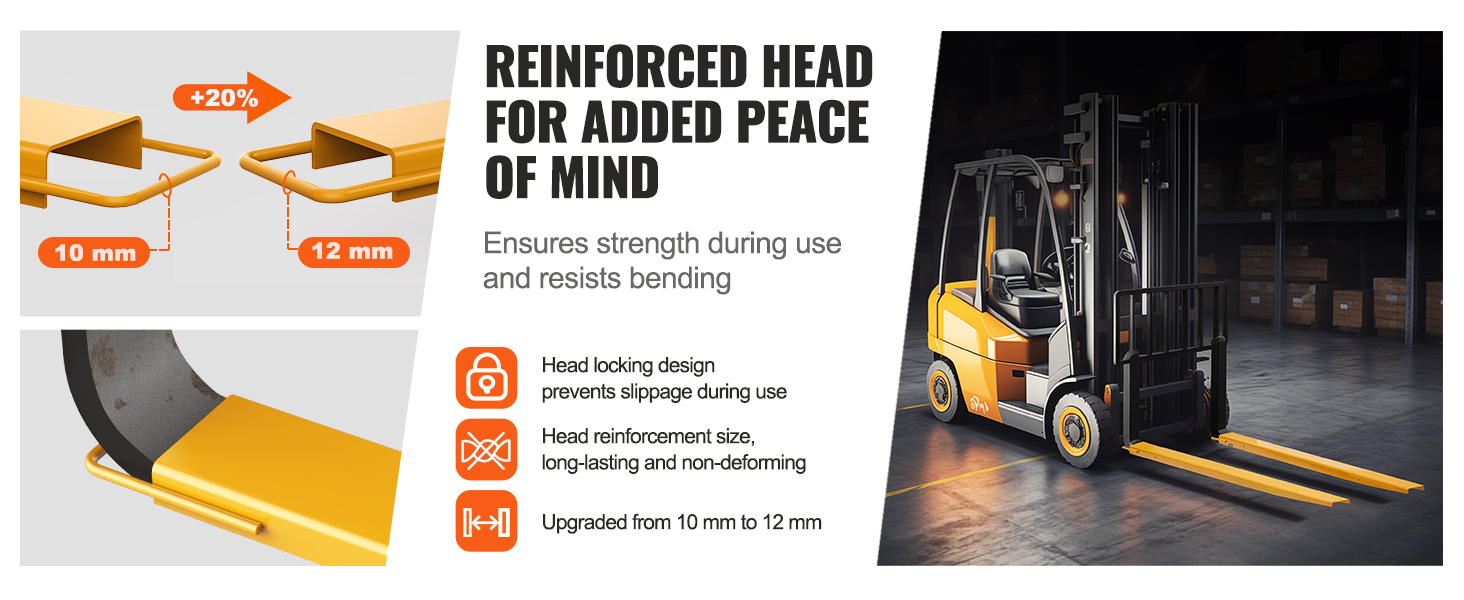
In the world of material handling, efficiency is key to maximizing productivity and minimizing costs. Forklift extensions have emerged as a game-changing solution for businesses looking to enhance their operations. These attachments extend the reach of a forklift, allowing it to handle larger loads and navigate tighter spaces with ease. With the right fork lift extensions, you can significantly boost your warehouse capabilities and ensure that your team works smarter, not harder.
When it comes to lifting and moving heavy materials, the standard fork size can sometimes limit your options. This is where fork lift extensions come into play, providing the versatility needed to accommodate various load sizes and shapes. By utilizing these extensions, you can streamline your operations, reduce downtime, and ultimately increase your bottom line. Understanding the benefits and potential applications of fork lift extensions can empower you to make informed decisions and elevate your business to new heights.
Benefits of Forklift Extensions
Forklift extensions offer numerous advantages that can significantly enhance the efficiency of material handling operations. One of the key benefits is the increased lifting capacity they provide. By extending the reach of the forklift, operators can handle larger and heavier loads without compromising stability. This capability allows businesses to optimize their storage space and improve the overall productivity of their operations.
Another significant benefit of forklift extensions is their versatility. These extensions can be used in a variety of industries, from construction to manufacturing. They allow operators to access hard-to-reach areas and lift materials that would otherwise be too high or awkward to move. This adaptability not only makes work easier but also improves safety, as workers can avoid stretching or maneuvering in unsafe ways when accessing elevated or difficult positions.
Additionally, using forklift extensions can result in cost savings for businesses. By maximizing the use of existing equipment, companies can reduce the need for purchasing additional forklifts or specialized lifting equipment. This not only lowers capital expenditure but also minimizes maintenance and operational costs over time. Investing in forklift extensions can thus be a smart financial decision that enhances operational capabilities while preserving resources.
Types of Forklift Extensions
Forklift extensions can be categorized into several types, each designed to meet specific needs and applications. Standard extensions are the most commonly used type. They typically range from four to eight feet in length and can be easily attached to the existing forks of a forklift. These extensions are ideal for lifting wider or longer loads without requiring a specialized forklift. They provide a simple and effective solution for warehouses and construction sites that often handle bulky items.
Another type of forklift extension is the tapered extension. These extensions gradually narrow down towards the tips, allowing for better grasping of irregularly shaped loads. Tapered extensions are especially useful for lifting items that are too wide or awkward for standard forks. Their design helps in stabilizing the load, preventing slippage or damage during transport. This makes them a favored choice in sectors where precision handling is paramount.
Lastly, we have the custom extensions, designed for unique or specialized lifting tasks. These extensions can be tailored in both length and design to accommodate specific loads that standard options cannot. Industries involved in heavy machinery, oversized equipment, or specialized cargo often require such custom solutions. While they may involve higher costs and more lead time, the ability to efficiently handle unique loads can significantly enhance operational productivity.
View Details
Proper Usage and Safety Tips
When utilizing forklift extensions, it is crucial to assess the load capacity and ensure the extensions are compatible with your forklift’s specifications. Before using the extensions, verify that they are securely attached and properly aligned with the forks. It is important to avoid exceeding the forklift’s rated capacity, as this could lead to instability and potential accidents.
Operators should practice safe lifting techniques while using fork lift extensions. Always ensure that the load is balanced and secure before lifting. Maintain a low center of gravity by keeping the forks at the appropriate height and avoid lifting heavy loads too high. Operating at a slow and steady pace will help in maintaining control and reducing the risk of tipping.
Training is essential when working with fork lift extensions. All operators should be trained on the specific use of extensions, including the risks involved and how to mitigate them. Conduct regular safety checks on the extensions and the forklift to ensure everything is in good working condition. Encouraging a safety-first culture in your workplace can significantly reduce the chances of accidents when using lift extensions.
Maintenance and Care for Extensions
Proper maintenance of forklift extensions is crucial for ensuring their longevity and performance. Regular inspections should be conducted to check for any signs of wear, damage, or deformation. Look for cracks, bends, or any irregularities that could compromise their strength. Keeping the extensions clean is equally important, as dirt and debris can lead to rust and deterioration over time. Using a mild detergent and water can help keep the surfaces free from harmful contaminants.
Lubrication is another key aspect of maintaining forklift extensions. The pins and pivot points should be regularly lubricated to ensure smooth operation and prevent excessive wear. This is especially important in high-use environments where the extensions are frequently attached and detached. Following the manufacturer’s recommendations for lubrication intervals will help maintain the integrity of the extensions and extend their lifespan.
Finally, storing forklift extensions properly can also help in maintaining their condition. When not in use, they should be stored in a dry, sheltered area away from direct sunlight and extreme temperatures. This will minimize exposure to the elements and prevent rust and degradation. By prioritizing maintenance and care, you can maximize the effectiveness and durability of your forklift extensions.
